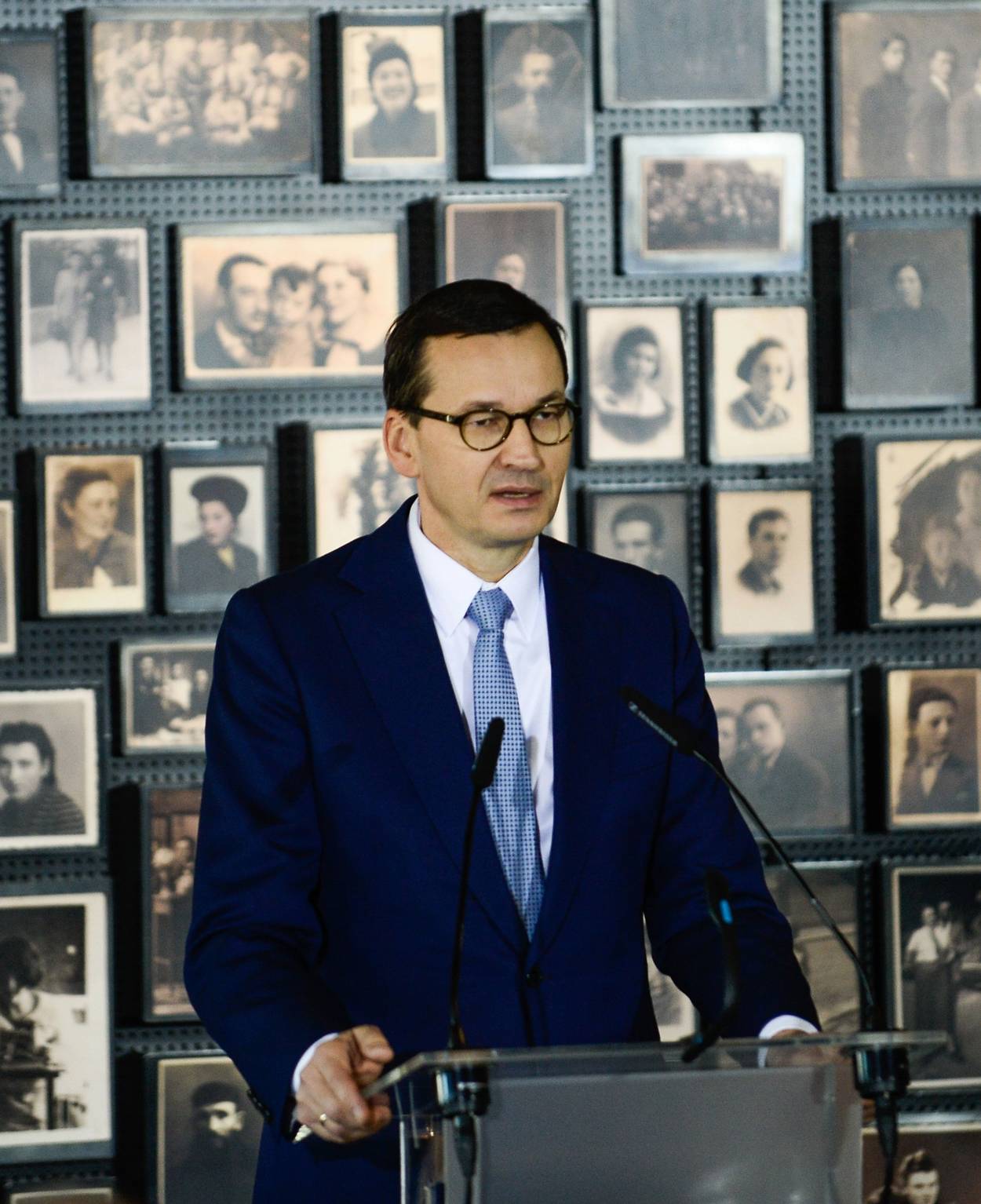 Zniszczyć, zapomnieć czy wytłumaczyć – co robić z kłopotliwym dziedzictwem przeszłości?
Zniszczyć, zapomnieć czy wytłumaczyć – co robić z kłopotliwym dziedzictwem przeszłości?
Wojciech Kaftański
17 stycznia rząd angielski ogłosił nowe prawo, które ma chronić historyczne pomniki należące do dziedzictwa kulturowego kraju. Po ponad półwieczu nowelizuje ono dwa akty prawne (1967 Civic Amenities Act Town oraz 1947 Country Planning Act), które do tej pory regulowały kwestie ochrony zabytków i pomników historycznych w kraju. Nowelizacja ogłoszona przez Roberta Jenricka, parlamentarzystę Partii Konserwatywnej, w praktyce uniemożliwia usunięcie jakichkolwiek pomników historycznych. Określana mianem „zostawić i wytłumaczyć” [retain and explain], nowelizacja jest odpowiedzią na akty społecznego wandalizmu wobec obiektów upamiętniających dorobek postaci, które wzbogaciły się na handlu niewolnikami lub miały rasistowskie poglądy.
Te organiczne i niekonsultowane z władzami działania polegały między innymi na usunięciu pomnika Edwarda Colstonaw Bristolu oraz na uszkodzeniu pomników Roberta Milligana i Winstona Churchilla w Londynie. Postaci te nie są jednak jednoznacznie negatywne. Churchill darzony jest wielkim szacunkiem w Wielkiej Brytanii. Postrzega się go jako wybawcę narodu z czasów II wojny światowej. Natomiast Colston i Milligan byli wielkimi filantropami; angażowali się w budowy szpitali i przytułków dla ubogich oraz hojnie wspierali akcje charytatywne. Nowe prawo ma zatem chronić pomniki poświęcone problematycznym autorytetom przy jednoczesnym wytłumaczeniu ich wzbudzającego kontrowersje dziedzictwa.
Ów rewizjonizm podzielił społeczeństwo Zjednoczonego Królestwa. Odbił się też szerokim echem w świecie naukowym. We wrześniu ubiegłego roku, na mapie kampusu Uniwersytetu Edynburskiego pojawił się „nowy” budynek o nazwie 40 George Square. Do września jego nazwa upamiętniała jednego z najwybitniejszych absolwentów uniwersytetu, głównego przedstawiciela szkockiego oświecenia w filozofii Davida Hume’a. O zmianę nazwy budynku apelowało grono studentów i naukowców motywowanych społecznymi poglądami filozofa, który, w żołnierskich słowach, był zwolennikiem handlu niewolnikami, rasistą i szowinistą. Hume, mistrz krytycznego myślenia, wybitny teoretyk funkcjonowania ludzkiego umysłu oraz ludzkiej psychiki, ale przede wszystkim krytyk nietolerancji i uprzedzenia, w swym dziele „O charakterach narodowych” [Of National Characters], popisuje się klasizmem i ksenofobią.
Społeczny rewizjonizm w Wielkiej Brytanii jest przejawem szerszego fenomenu, który mierzy się dziś z problemem zagmatwanych autorytetów i trudnej historii. Ów niezinstytucjonalizowany ruch społeczno-intelektualny nabrał pędu w 2018 roku w Stanach Zjednoczonych i objął tak różne kwestie jak zrewidowanie symboli i monumentów narodowychzwiązanych z ruchem konfederackim czy przewartościowanie idei przyświecających funkcjonowaniu instytucji kultury i nauki.
W 2018 roku Wydział Prawa Uniwersytetu Harvarda zmienił swoje godło; poprzednie bezpośrednio nawiązywało do herbu rodziny Royall, fundatorów wydziału, którzy to dorobili się fortuny na handlu niewolnikami. Tytuły wewnętrzne uniwersytetu, takie jak „House Master”, który nawiązuje do osiemnastowiecznego określenia posiadacza niewolników, poddano liftingowi. Myliłby się ten, kto myśli, że podejście uniwersytetu do trudnej przeszłości jest jednolite i odbywa się bez problemów. Od 2016 roku toczy się sprawa zmiany nazwy budynku akademickiego noszącego nazwę Mather House. Increase Mather, jeden z prezydentów Uniwersytetu Harvarda, był siedemnastowiecznym protestanckim duchownym uwikłanym w słynny proces czarownic z Salem i właścicielem niewolników.
Wzorce moralne, przeszłość, a sprawa Polska
Radzenie sobie z przeszłością, która wraz z nowymi badaniami historycznymi i otwieraniem się archiwów, nabiera tempa i budzi różne reakcje zarówno wśród naukowców, jak i szerokiej społeczności. Warto pochylić się nad próbą zrozumienia źródeł spolaryzowanych reakcji na zagmatwane autorytety z perspektywy filozofii.
Wysoka poprzeczka i moralni święci
Za typowe wzorce moralne od wieków uznaje się rodziców i nauczycieli. Z czasem ci pierwsi ponoszą moralne czy społeczne porażki, rozwodzą się, łapią mandaty, bankrutują czy wylatują z pracy, zaś wiedza tych drugich okazuje się ograniczona. Te ograniczenia, będące początkowo wstrząsem, wraz z naszym rozwojem zostają przyswojone jako nieodłączny element ludzkiej egzystencji. Żaden rodzic nie jest ideałem; żaden nauczyciel nie wie wszystkiego. Ale czy to dyskwalifikuje ich w byciu wzorcami moralnymi i społecznymi?
Od lat 80. w filozofii toczy się zagorzała dyskusja nad faktem, iż moralność w klasycznym rozumieniu stawia poprzeczkę zbyt wysoko. Filozofowie tacy jak Samuel Scheffler czy Susan Wolf argumentują, że forma maksymalizmu moralnego jest nie do spełnienia, ale i demotywuje do życia moralnego. Wolf w artykule „Moral Saints” definiuje „moralnych świętych” jako osoby, których każda czynność jest tak moralna, jak to się tylko da. Sama nie jest w stanie zidentyfikować takich realnie istniejących ludzi, co w jej zamyśle znaczy, że ich nie ma. Nawet gdyby było inaczej, nasza interakcja z nimi raczej zniechęcałaby nas do podążania ich ścieżką ze względu na ich onieśmielający charakter.
Cancel culture i ksiądz Robak
Jak postępować z wzorcami moralnymi, których przeszłość jest moralnie, a i społecznie, i prawnie, problematyczna. Jednym z podejść do upadłych wzorców jest zjawisko społecznego anulowania, z angielskiego cancel culture. Zwolennicy rozprawienia się z Davidem Hume’em, Increase’em Matherem, ale też ze współczesnymi upadłymi, takimi jak Bill Cosby, Carl Lentz czy Harvey Weinstein, chcą ich odseparować i wyautować z funkcji publicznych.
Cosby był głosem czarnoskórych Amerykanów lat 80. W popularnym w Polsce „Bill Cosby Show” grający lekarza i ojca ferajny dzieci aktor uczył Afroamerykanów nowych modeli postępowania w społeczeństwie. Pokazywał, iż pomimo swojego koloru skóry, który już na starcie zabierał wielu ludziom szanse sukcesu, przy ciężkiej pracy i dzięki predyspozycjom charakteru, można osiągnąć amerykańskie marzenie. Cosby był też modelem wychowawczym i społecznym. Jego upadek nadszedł, kiedy na jaw wyszły oskarżenia o wielokrotne gwałty na kobietach odurzanych przedtem narkotykami. Cosby zawiódł. Należy go za to ukarać i usunąć z przestrzeni społecznej.
Jednak cancel culture wiąże się z wieloma dylematami moralnymi dotykającymi regulacji outowania. Jak długo ma trwać „anulowanie”? Kto powinien o tym decydować? Jak postępować w przypadku nieuzasadnionego ostracyzmu? Kładąc nacisk na aspekt edukacyjny etyki, Iris Murdoch zwraca uwagę na potrzebę stworzenia przestrzeni do rehabilitacji i poprawy moralnej. Wyautowanie (ujawnienie przez osoby trzecie) podwójnej tożsamości Jacka Soplicy uniemożliwiłoby działalność księdza Robaka, głównego prowodyra powstań przeciw Moskalom na Litwie. Ten model moralnej rehabilitacji, rodzimy odpowiednik świętego Piotra wypierającego się Chrystusa, tak wdzięczny temat matur z języka polskiego, nie zakorzenił się w świadomości Polaków.
Święty albo śmierć
Inną postawą wobec zagmatwanych autorytetów jest pójście w zaparte, zarówno w potępieniu upadłego modelu, jak i bronieniu jego kryształowego życia. Widać to szczególnie na polskiej scenie politycznej. Krytycy spójności moralnej prezydenta Lecha Wałęsy widzą w nim zdrajcę, który poszedł na ustępstwa wobec komunistycznej władzy. Broniący honoru byłego prezydenta do wiadomości przyjmują tylko te fakty, które świadczą o jego nieposzlakowanej moralności. Atak na niego rozumieją jako atak na Polskę i jej dziejową rolę w walce z komunizmem.
Jak wynika z mojej obserwacji, lustrzanym odbiciem tego jest stosunek do autorytetu papieża Jana Pawła II. Bez zapoznania z dokumentami, które świadczą, że papież mógł posiadać wiedzę o skandalach pedofilskich w Kościele, gros polityków, ludzi kultury i księży stwierdza ich fałszywość; co ustępliwsi uznają, że Wojtyła został zmanipulowany; zaś kardynał Stanisław Dziwisz widzi atak na papieża jako skierowany przeciw niemu samemu, a w zasadzie przeciw Polsce. Takie postawy, wpisujące się w szczególne bliskie polskiemu etosowi „święty albo śmierć”, mogą początkowo budzić śmiech i politowanie. Jednak ich głębsza analiza filozoficzna pokazuje złożoność ludzkiego formowania poglądów i wartości.
Zmierzch bogów kosztem świtu ludzi
Spoglądanie krytycznym okiem na autorytety jest znakiem rozpoznawczym dzisiejszych czasów. Już od nowożytności kierowani ideałami oświeceniowymi naukowcy zachęcani byli do myślenia bez oglądania się na uprzednio wyznaczone kanony wnioskowania i osiągnięcia naukowe. Postrzeganie świata i myślenie, jeśli miało przynieś postęp wiedzy o nim, powinno być poddane tylko rozumowi. Dziś zdaje się, że jesteśmy wtórnymi ofiarami nie tylko bezkrytycznej wiary we wzorce moralne, ale także w rozum. Namysł filozoficzny nad często radykalnymi rozbieżnościami w wartościowaniu autorytetów pokazuje, iż podziw, jakim darzymy autorytety, nie zawsze ma charakter kognitywny, wynikający z wiedzy, ale często afektywny, czyli emocjonalny. Jak wiele innych emocji – jest zaraźliwy, buduje i umacnia się grupach. Nie zawsze panujemy nad nim za pomocą naszego rozumu.
Filozofowie odwołujący się dziś do myślicieli takich jak Baruch Spinoza i Adam Smith wskazują na to, iż to, co wiemy o sobie samych, o innych i o świecie, wynika z tego, jak czujemy. Nasze emocje, nierzadko podgrzane do czerwoności, są często filtrem do naszej wiedzy o innych. Wchodząc w grupę osób, w których ceniony jest Robert Lewandowski, jesteśmy bardziej skłonni do uznania go za „autorytet” w piłce nożnej. Recenzując książkę autora, którego darzymy antypatią, będziemy koncentrować się na jej niedociągnięciach czy wadach. Upatrując bogów w autorytetach, wyrządzamy sobie krzywdę, pozbawiając się przykładów na miarę dzisiejszych Jacków Sopliców. Wylewając dziecko z przysłowiową kąpielą, poprzez anulowanie dorobku problematycznych autorytetów, pozbawiamy siebie motywacji do rozwoju w jakiejś dziedzinie, ale również szansy na odebranie niełatwej lekcji o ułomnym człowieczeństwie.
Zawartość publikowanych artykułów i materiałów nie reprezentuje poglądów ani opinii Reunion’68,
ani też webmastera Blogu Reunion’68, chyba ze jest to wyraźnie zaznaczone.
Twoje uwagi, linki, własne artykuły lub wiadomości prześlij na adres:
webmaster@reunion68.com




